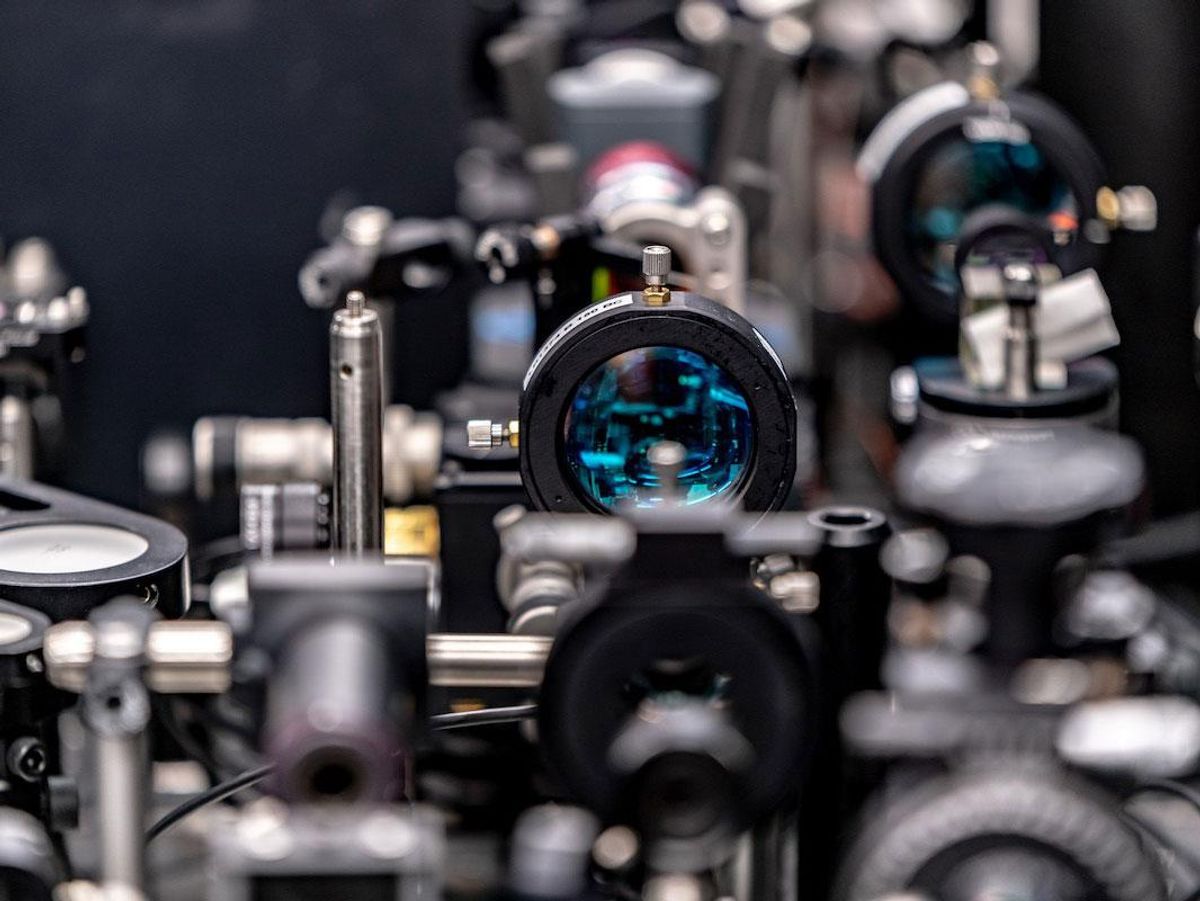A new optical switch is, at 1 trillion operations per second, between 100 and 1,000 times faster than today's leading commercial electronic transistors, research that may one day help lead to a new generation of computers based on light instead of electricity, say scientists in Russia and at IBM.
Computers typically represent data as ones and zeroes by switching transistors between one electric state and the other. Optical computers that replace conventional transistors with optical switches could theoretically operate more quickly than regular computers, as photons travel at the speed of light, while electrons, typically, don’t.
The new device relies on a 35-nanometer-wide organic semiconductor polymer film sandwiched between two highly reflective mirrors. The result is a microscopic cavity designed to keep incoming light trapped inside for as long as possible to help it couple with the cavity's material.
Two lasers help operate the device—a bright pump laser and a very weak seed laser. When the pump laser shines on the microcavity, its photons can couple strongly with excitons (electrons bound to their positively charged counterparts, holes) within the cavity's material. This can give rise to short-lived quasiparticles known as exciton-polaritons.
The cluster of exciton-polaritons can form so-called Bose-Einstein condensates, collections of particles that each behave like a single atom. The light from the seed beam could switch this condensate between two measurable states that serve as zero and one.
The new device not only can operate extraordinarily quickly, but it can switch using as little as one photon of input on average. In contrast, transistors generally needs dozens of times more energy to switch, while those that switch using single electrons are much slower.
"The most surprising finding was that we could trigger the optical switch with the smallest amount of light, a single photon," says study senior author Pavlos Lagoudakis, a physicist at the Skolkovo Institute of Science and Technology in Moscow.
Electronic transistors that are comparably switchable with just single electrons usually require bulky cooling equipment, which in turn consumes power and factors into their operating costs. In contrast, the new optical switch works at room temperature.
Lagoudakis cautions that all-optical computing likely lies far in the future. "It took 40 years for the first electronic transistor to enter a personal computer and the investment of many governments and companies and thousands of researchers and engineers," he says. "It is often misunderstood how long before a discovery in fundamental physics research takes to enter the market."
Still, Lagoudakis suggests their research could lead to "optical accelerators" one day relatively soon—optical computing devices that can perform specialized operations much faster than classical electronic computers. "These could be used to remove computational bottlenecks in supercomputers that usually rely on massive parallel processing," he notes.
Besides optical accelerators and all-optical computing, Lagoudakis says the super-sensitivity of the new optical switch to light suggests it could serve as a light detector that could find use in lidar scanners, such as those finding use in drones and autonomous vehicles.
The scientists detailed their findings in a recent issue of the journal Nature.
Charles Q. Choi is a science reporter who contributes regularly to IEEE Spectrum. He has written for Scientific American, The New York Times, Wired, and Science, among others.



